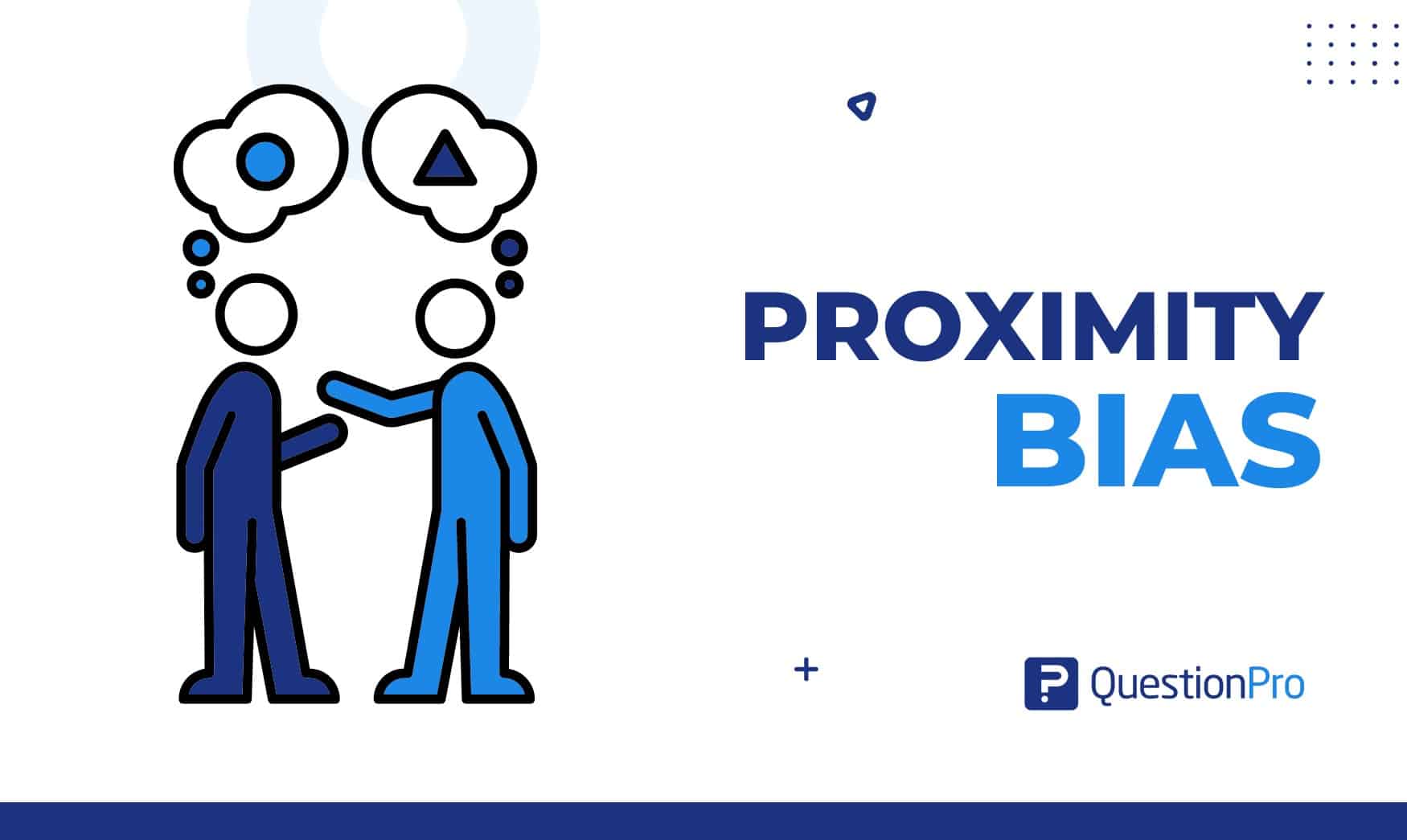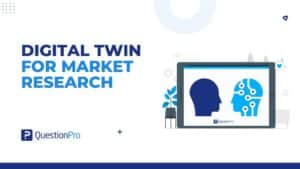
Imagine your teacher always picking students sitting in the front row for special tasks, ignoring the smart ones in the back. That wouldn’t be fair, right? Proximity bias is a bit like that.
It doesn’t just affect those working from a distance but the whole team. When people are chosen based on where they sit rather than their skills, the team might miss out on great ideas and talents. It’s like picking players for a team not because of their skills but because of where they live.
Understanding and preventing proximity bias is crucial for making workplaces awesome for everyone. In this blog, we will discuss what proximity bias is and how managers can prevent it. We will also explore its types with examples for your better understanding.
What is Proximity bias?
Proximity bias is when managers at work tend to like and choose those who are physically close to them. It might sound a bit unfair, but it happens because our brains sometimes think that if someone is nearby, they’re probably doing a great job rather than remote workers.
This tendency frequently results in disadvantages for remote employees. They might find themselves excluded from important decision-making processes, project assignments, promotions, or other opportunities for career advancement.
Why is Proximity Bias a Problem in The Workplace?
Understanding proximity bias is crucial to ensure a hybrid work environment. Let’s explore why proximity bias poses a problem in the workplace and explore its potential consequences.
- Impact on Hiring: One of the areas where proximity bias is most evident is in the hiring process. When decision-makers are physically close to certain candidates, they may unconsciously develop a preference for them.
This preference can lead to overlooking qualified employees who may be working remotely or are located in different offices.
- Team Collaboration: In a world where remote work is becoming increasingly common, proximity bias can damage effective collaboration. Team members who are physically close to each other may receive more opportunities for collaboration, leaving remote team members feeling isolated or left out. This can result in a lack of diverse perspectives in decision-making processes.
- Performance Evaluation: It can also seep into performance evaluations. Employees who work closely with their supervisors may receive more immediate feedback and recognition, while those working remotely might not get the same level of attention.
This can create an unfair advantage for some employees and perpetuate inequality within the workplace.
- Opportunities for Growth: Career advancement opportunities can be impacted by this bias as well. Those physically close to decision-makers may have more visibility and access to mentorship and career development opportunities.
Remote workers or those in different locations may find it challenging to build the same level of rapport and access similar growth opportunities.
This bias poses a significant challenge to achieving workplace equality. By actively working to address this bias in-office counterparts, organizations can create a more inclusive and fair working environment where every employee has the opportunity to grow, regardless of their physical location.
How Can Managers Prevent Proximity Bias?
Preventing proximity bias requires a conscious effort on the part of managers to ensure a fair work environment and prevent preferential treatment of all team members, regardless of their physical location. Here are practical strategies for managers to prevent bias in the workplace:
Embrace Remote-Friendly Practices
With the rise of remote work, it’s essential for managers to embrace practices that support all team members, ignoring their physical location. Encourage the use of virtual communication tools, schedule regular video conferences, and ensure that important information is accessible to everyone, whether they are in the office or working remotely.
Establish Clear and Objective Criteria
Managers can prevent this bias by establishing clear and objective criteria for various processes, such as hiring, performance evaluations, and promotions. Clearly defined expectations help ensure that decisions are based on merit, skills, and achievements rather than on physical proximity.
Provide Equal Opportunities for Collaboration
Managers should actively work to provide equal opportunities for collaboration among team members. If some team members work in the office while others are remote, ensure that projects and tasks are distributed equitably. This can help prevent certain individuals from dominating collaborations due to their physical proximity.
Encourage Open Communication
Create an environment where open communication is valued. Encourage team members to share their thoughts, ideas, and concerns. This helps in building a culture where everyone feels heard, regardless of their physical location. Use communication channels that ensure inclusivity, such as team meetings and direct reports that include remote participants.
Offer Flexibility in Work Arrangements
Managers can promote inclusivity by offering flexibility in work arrangements. Recognize that employees have different needs and preferences when it comes to their work environment. Providing flexibility allows team members to choose a work arrangement that suits them best, whether it’s working in the office or remotely.
Implement Diversity and Inclusion Training
Educate the team on the importance of diversity and inclusion, including the impact of biases. Training sessions can raise awareness among team members and help them recognize and mitigate their biases. This knowledge can contribute to a more inclusive and understanding workplace culture.
Lead by Example
Managers have a powerful influence on the workplace culture. Leading by example and establishing inclusive behavior can set the tone for the entire team. Actively engage with all team members, regardless of where they are located, and show that you value and appreciate diverse perspectives.
By implementing these simple strategies, managers can play a vital role in preventing this bias. It can also help create an inclusive workplace where every team member, including remote and in-office workers, feels valued, regardless of their physical proximity to the office.
Types With Examples of Proximity Bias
Recognizing various types of proximity bias is important for creating a fair and inclusive workplace. Here are various types of proximity bias, each with examples, focusing on the importance of considering the experiences of both remote workers and in-office employees:
1. Physical Location Bias
This is the most common type of proximity bias. It occurs when managers prefer employees working in the same location. For instance, a manager might be more familiar with the team in the main office. It leads to unintentional neglect of the contributions of remote workers.
Example: The main office team is consistently chosen for high-profile projects, leaving the remote team feeling left out despite their expertise.
2. Office Layout Bias
Sometimes, biases can be influenced by the layout of the office. Those who sit closer to decision-makers or in central workspaces may have more opportunities for casual interactions. It leads to stronger relationships with key players in the organization.
Example: A team member located near the manager’s office receives more mentorship and career guidance. It creates an unintentional advantage over colleagues situated farther away.
3. Social Circle Bias
It can also manifest through social circles formed in the workplace. Colleagues who share similar interests and engage in after-work activities together may develop stronger bonds, potentially influencing decisions in favor of the members of these social circles.
Example: Sometimes, a manager might like team members who go to weekly after-work events. But, without realizing it, they could leave out others from important talks and decisions.
4. Meeting Presence Bias
The bias towards those physically present in meetings is another common type. Participants in the room might receive more attention and recognition, while remote attendees may find it challenging to actively contribute or be noticed.
Example: Team members present in a strategy meeting receive immediate feedback and acknowledgment, while remote participants may struggle to make their voices heard, impacting their visibility.
5. Commuting Bias
In workplaces where commuting is a factor, biases may emerge based on the proximity of employees’ residences to the office. Those who live closer might be perceived as more committed or dedicated. It unintentionally influences decisions related to promotions or special assignments.
Example: An employee who lives nearby is consistently chosen for last-minute tasks, as their proximity is assumed to make such requests more convenient.
Recognizing these types is crucial in creating hybrid teams. By understanding how biases can shape our decisions, we can actively work towards creating environments where opportunities are distributed equitably, irrespective of physical proximity.
How QuestionPro Helps in Identifying and Preventing Proximity Bias?
QuestionPro, a survey and feedback platform, can play a significant role in identifying and preventing this bias in the workplace through various features and functionalities. Here’s how QuestionPro can contribute to addressing this bias:
- Anonymous Surveys: QuestionPro allows organizations to conduct anonymous surveys, providing a platform for employees to share their thoughts without fear of judgment. By gathering feedback anonymously, organizations can gain insights into potential instances of this bias without revealing individual identities.
- Remote-Friendly Feedback: With QuestionPro’s online survey capabilities, managers can collect feedback from remote employees in a format that is inclusive and accessible to all, regardless of physical location. This helps ensure that remote workers’ voices are heard and considered in evaluations, mitigating the impact of this bias.
- Diverse Respondent Groups: QuestionPro enables organizations to segment survey respondents based on various criteria, including location. By analyzing feedback from diverse groups, managers can identify patterns related to proximity bias and take targeted actions to address these issues.
- Customizable Questionnaires: QuestionPro allows organizations to customize survey questionnaires based on their specific needs. This flexibility enables managers to include questions that directly address proximity bias, helping pinpoint areas where biases may influence decisions.
- Real-Time Analytics: The platform provides real-time analytics and reporting features, allowing organizations to quickly analyze survey results. This rapid analysis enables timely intervention in cases where this bias is identified, preventing its escalation and creating a more inclusive office environment.
- Training and Development Surveys: QuestionPro can be used to conduct surveys related to diversity and inclusion training programs. By gathering feedback on the effectiveness of such programs, organizations can identify areas where employees need further education on biases, including proximity bias.
- 360-Degree Feedback: QuestionPro supports 360-degree feedback surveys, where employees receive input from various sources, including peers, subordinates, and managers. This comprehensive feedback approach helps in obtaining a holistic view of an employee’s performance, reducing the impact of biases related to proximity.
- Continuous Pulse Surveys: The platform allows organizations to conduct regular pulse surveys to assess the workplace environment continuously.
Regular check-ins through pulse surveys can help in identifying and addressing proximity bias as it emerges, rather than waiting for annual reviews.
QuestionPro offers a range of tools and features that organizations can utilize to identify and prevent proximity bias in the workplace. The platform supports a proactive approach to creating an inclusive and equitable work environment through customizable surveys, diverse respondent groups, and real-time analytics.
Conclusion
Recognizing and addressing proximity bias is essential for building a workplace that values every team member’s contributions. By understanding what proximity bias is, recognizing its examples, and actively working to prevent it, organizations can foster inclusivity and create a fair and equal work environment for everyone.
QuestionPro can be a valuable platform in this journey. QuestionPro’s survey and feedback platform offer valuable resources to identify, measure, and address biases in the workplace. Organizations can gain insights into potential instances of proximity bias by utilizing customizable surveys, diverse respondent groups, and real-time analytics.
This platform also helps take targeted actions to create a more equitable work environment. With QuestionPro, the journey toward a more inclusive workplace becomes not just a goal but a tangible and achievable reality. Contact QuestionPro for more information.







